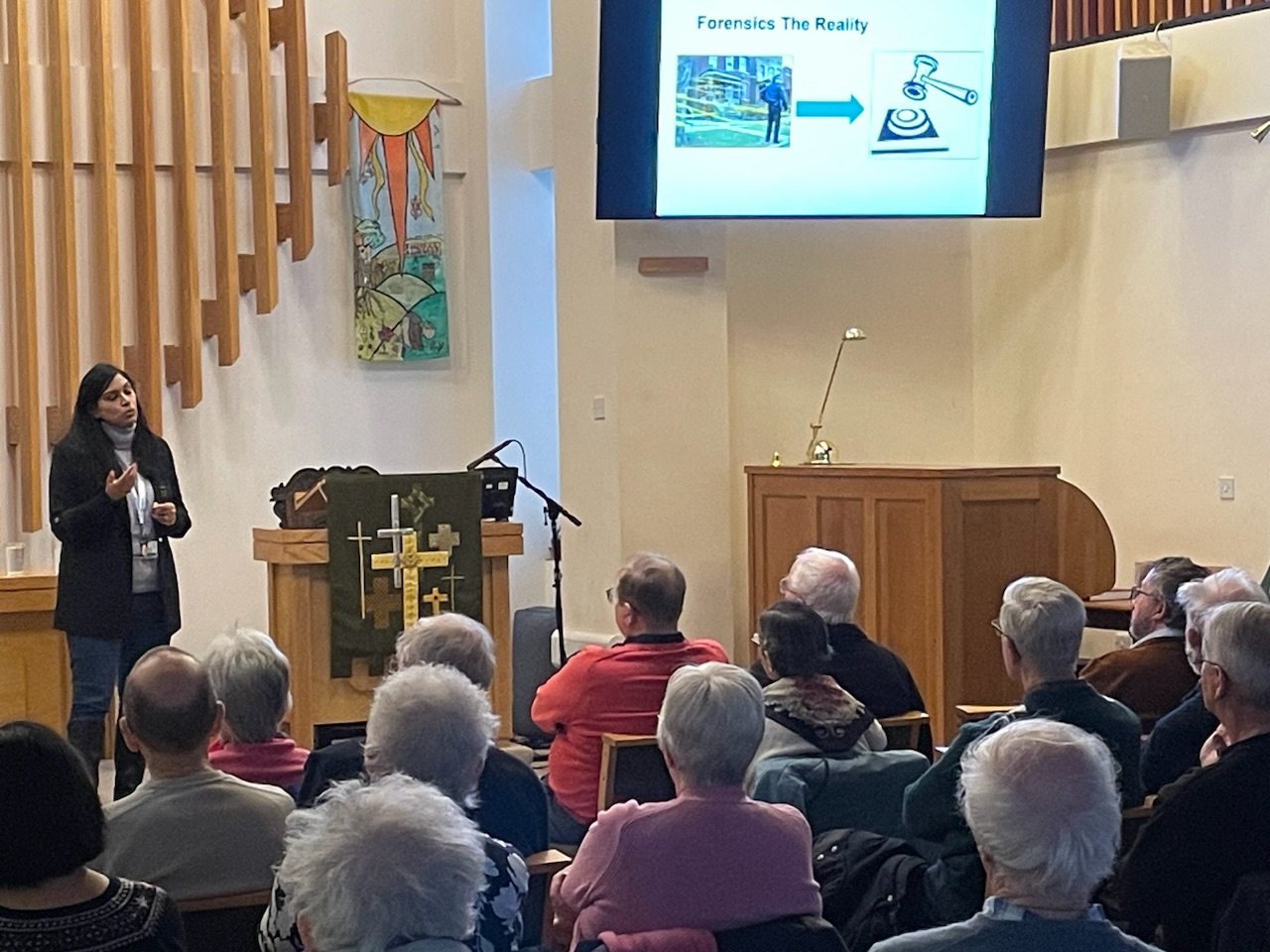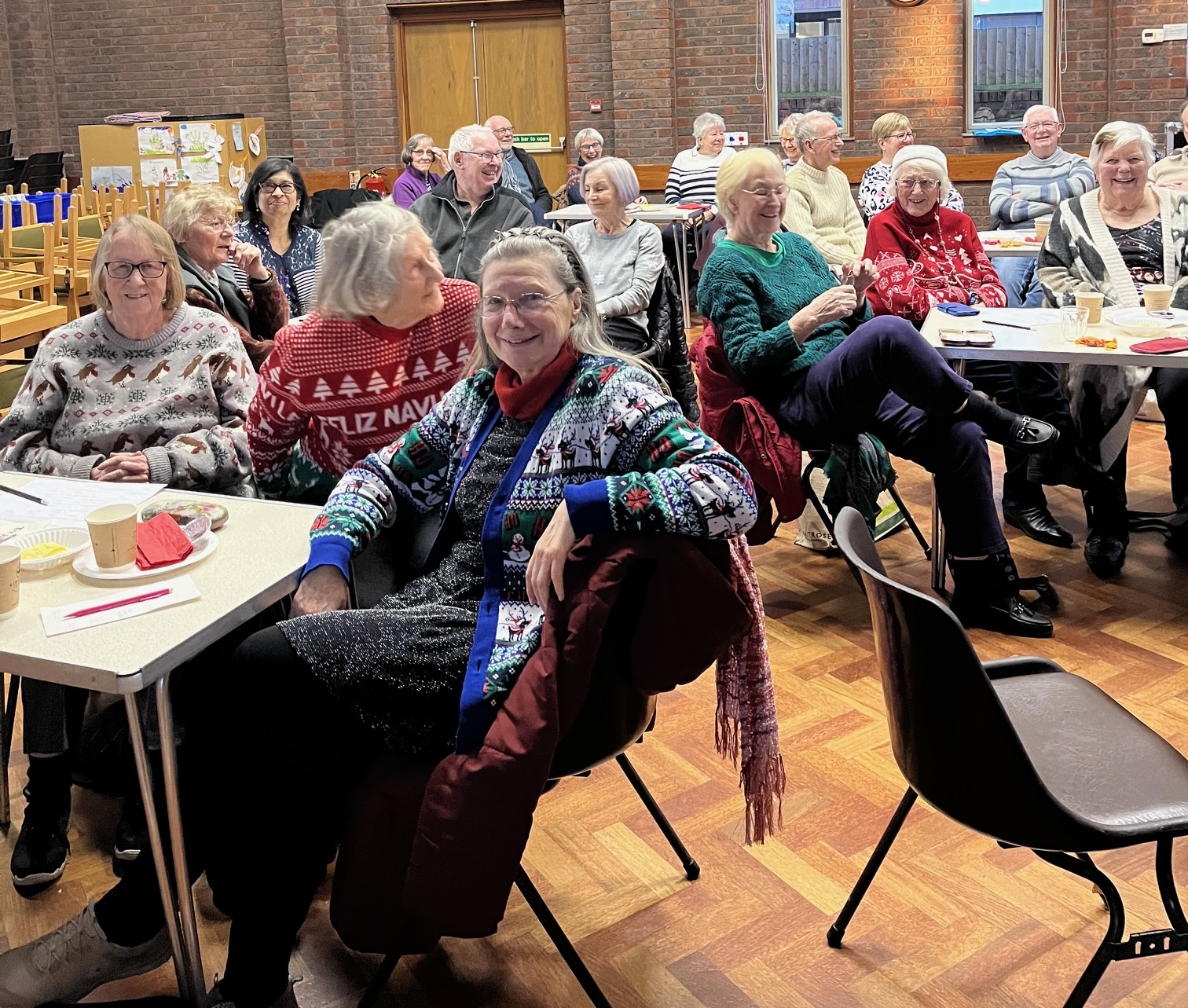
| Status: | Active, open to new members |
| Group leader: | |
| When: | On Thursday afternoons 3rd in Month |
| Venue: | Staines Methodist Church |
Do you have an enquiring mind? Do you sometimes wonder how things work and why they work the way they do? Do you feel you ought to know something about topics such as emerging technologies, climate change, space exploration and a whole range of other scientific and engineering topics?
If the answer to any of the above questions is “Yes” then the Science & Technology Group could be just the one for you. Our talks are given by experts in their field but are never too highbrow. In addition to our talks, we try to arrange three trips a year to sites that are of scientific and engineering interest. As examples, our recent trips have included the Canal Museum, Tower Bridge and the Postal Museum (see the Past Events below).
Our indoor meetings are held on the 3rd Thursday of the month (except August) starting at 14:00 in Staines Methodist Church, Thames Street, Staines, TW18 4SD. There is a small annual membership fee of £2 plus a fee of £2 per meeting, the latter is to cover the cost of hall hire; the cost of visits varies depending on the venue.
The members of the Committee are:-
- John Biggs - Leader
- Helen Beecham
- Oliver Davies
- Alan Pugh
- Gary Ventham
If you would like more information about the Group, please contact the Group Leader by clicking on the blue text next to "Group Leader" at the top of this page. This opens up a new screen where you can type and send your message.
A copy of the current programme can be viewed by clicking on the link in blue below.
Science & Technology Programme 2025
Online Learning
The U3A host some brilliant science talks online. There are many subjects, all free!
Recent ones include: The Brain, Plate Tectonics, The James Webb Telescope and 'The Hard Science of Herbal Medicine'.
To see more details, please click on Online Learning Events.


QI (Quite Interesting)
Quills, oak galls and gum Arabic
Magna Carta was written with a quill pen made from the sharpened feather of a swan or goose. The point and curve of the quill was a slightly different shape depending on whether the feather came from the bird’s left or right wing. Right-handed scribes used a feather from the left wing and left-handed scribes used a feather from the right wing. (expense?)
Oak gall ink was used from medieval times to the 20th century when it became obsolete. Iron-gall inks were usually prepared by combining plant extracts from infected oaks, iron salts and gum Arabic in 2,5,6, proportions.

The photo shows Knoppa oak galls and some of the large acorns found this year in what is known as a mast year.
For previous "quite interesting" facts, follow this link
Forthcoming Events
Past Events
Below you can find some pictures and details of a few of the group visits and talks.
Click on the blue titles for bigger pictures or more information.
-
RNLI All-weather Lifeboat Centre Visit – July 25

This was a much anticipated visit and definitely did not… read more
<<<< More Group Pages Below >>>>
Groups listed alphabetically
- Ambling
- American Square Dancing
- Art Appreciation 1
- Art Appreciation 2
- Badminton
- Beaded Jewellery
- Book Club 1
- Book Club 2
- Book Club 3
- Bridge
- Bus Pass Travel 1
- Bus Pass Travel 2
- Canasta 1
- Canasta 2
- Canasta 3
- Card Making
- Cards Unlimited
- Classic Cars
- Classical Concerts
- Computer Training
- Creative Crafting
- Creative Writing
- Cribbage
- Current Affairs
- Exploring Faiths
- Exploring London
- Family and Social History
- Family History
- Food and Travel Book Club
- French Conversation 2
- French Conversation 3
- French Conversation 4
- French Film Club
- Gardening 1
- Gardening 2
- Golf
- History
- Italian for Improvers Level 1
- Italian for Improvers Level 2
- Jazz Appreciation 1
- Jazz Appreciation 2
- Knit and Natter
- Lawn Bowls
- Literature
- Local History
- Mah-Jong
- Military History
- Mindfulness
- MOTO 1 (Members on their own)
- MOTO 2 (Members on their own)
- Motorcycling
- Muncheon Club
- Music Appreciation
- Needlecraft 1
- Needlecraft 2
- Nostalgic Games
- Outings
- Painting
- Philosophy and Psychology
- Photography
- Pickleball 1
- Pickleball 2
- Play Reading 1
- Play Reading 2
- Poetry Writing
- Qigong
- Quizzing at Home
- Recorders
- Rummikub 1
- Rummikub 2
- Rummikub 3
- Rummikub 4
- Safer Motoring
- Science & Technology
- Scrabble 1
- Scrabble 2
- Scrabble 3
- Singing for Pleasure
- Sketching
- Spanish
- Stretch & Dance
- Tasty Tribe
- The 1960s
- Walking
- Whist 2
- Write your life













